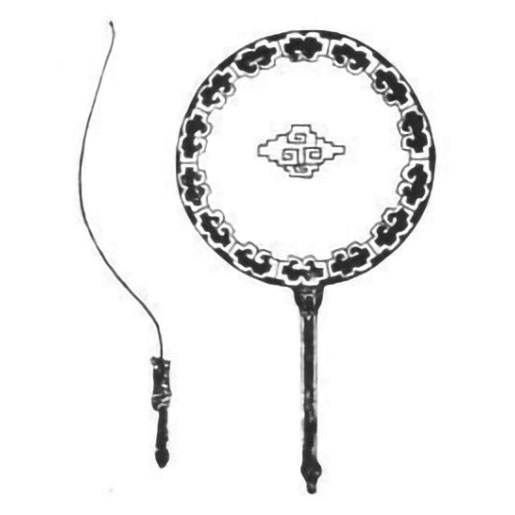nae overview
 Nae (pinyin: Nà é), also known as Reba drum. The Tibetan and Monba people play musical instruments that strike the membrane. The Han people call it the Tibetan hand drum. Popular in Tibet's Qamdo, Nagqu, Nyingchi, Qinghai Yushu, Gannan in Gansu, Ganzi in Sichuan and Diqing in Yunnan and other Tibetan areas. Originally a Tibetan religious musical instrument. It has become an inseparable accompaniment instrument for folk songs and dances such as Tibetan "reba dance". It is called "hand drum" in Chinese. Popular in the Tibet Autonomous Region and other Tibetan-inhabited areas.
Nae (pinyin: Nà é), also known as Reba drum. The Tibetan and Monba people play musical instruments that strike the membrane. The Han people call it the Tibetan hand drum. Popular in Tibet's Qamdo, Nagqu, Nyingchi, Qinghai Yushu, Gannan in Gansu, Ganzi in Sichuan and Diqing in Yunnan and other Tibetan areas. Originally a Tibetan religious musical instrument. It has become an inseparable accompaniment instrument for folk songs and dances such as Tibetan "reba dance". It is called "hand drum" in Chinese. Popular in the Tibet Autonomous Region and other Tibetan-inhabited areas.The forehead drum frame is made of wood in an oblate shape, covered with sheepskin on both sides, and varies in size. The central area and surrounding areas of the drum surface are painted with brightly colored patterns. A long wooden drum handle is attached to the drum frame. Some of the foreheads are also decorated with colorful pom-poms on the drum frame. The drum is made of thin rattan into a bow shape, the handle is made of wood, and there is a dragon head carving on the grip part.
That forehead is not only an accompaniment instrument, but also a dance prop. When playing, the left hand holds the drum handle and the right hand holds the bow drum. Due to the different positions of the drums, the sound also changes, and the players dance while playing.
In Weixi County, Diqing Tibetan Autonomous Prefecture, Yunnan Province, there is a legend among the people: A long time ago, the gods in the sky wanted to build a Potala Palace for the Bodhisattva. The Bodhisattva, who was in charge of building the palace, invited an eminent monk proficient in Buddhism to punish the demon king. The eminent monk found handsome and beautiful young men and women, taught them the most beautiful dance, and danced on the lawn in front of the construction site, attracting thousands of people. The people followed and danced, the demon king pretended to be a Tibetan compatriot and entered the dance hall to make monsters and mischiefs. The eminent monk used a plan to fly out a steel knife from his cuff to kill the demon king. The dance taught by eminent monks was originally designed to trap and kill the Demon King. When dancing, the female dancer held a drum made from the Demon King’s ribs. People called this dance “Rib Dance” and later called it “Reba”. "Dance", and that forehead has been widely circulated among Tibetan folks to this day.
- Pinyin:Nà é
- nickname:Reba drum
- nationality:Tibetan, Monba
- nature:religious musical instrument
overview of other similar instruments
- sanyanxiao overview
- Daguangxian overview
- Leiqin overview
- hahao overview
- yandundagu overview
- Han Xiaozheng overview
- Fang Xiang overview
- guanzi overview
- zhuqin (Dao Qin) overview
- zhuiqin overview
- bangzi overview
- three-stringed piano overview
- Gehu overview
- xiao overview
- xiaokonghou overview
- Konghou overview
- Sheng overview
- suona overview
- hulusi overview
- gushao overview
 渝公网安备 50010702504639号
渝公网安备 50010702504639号